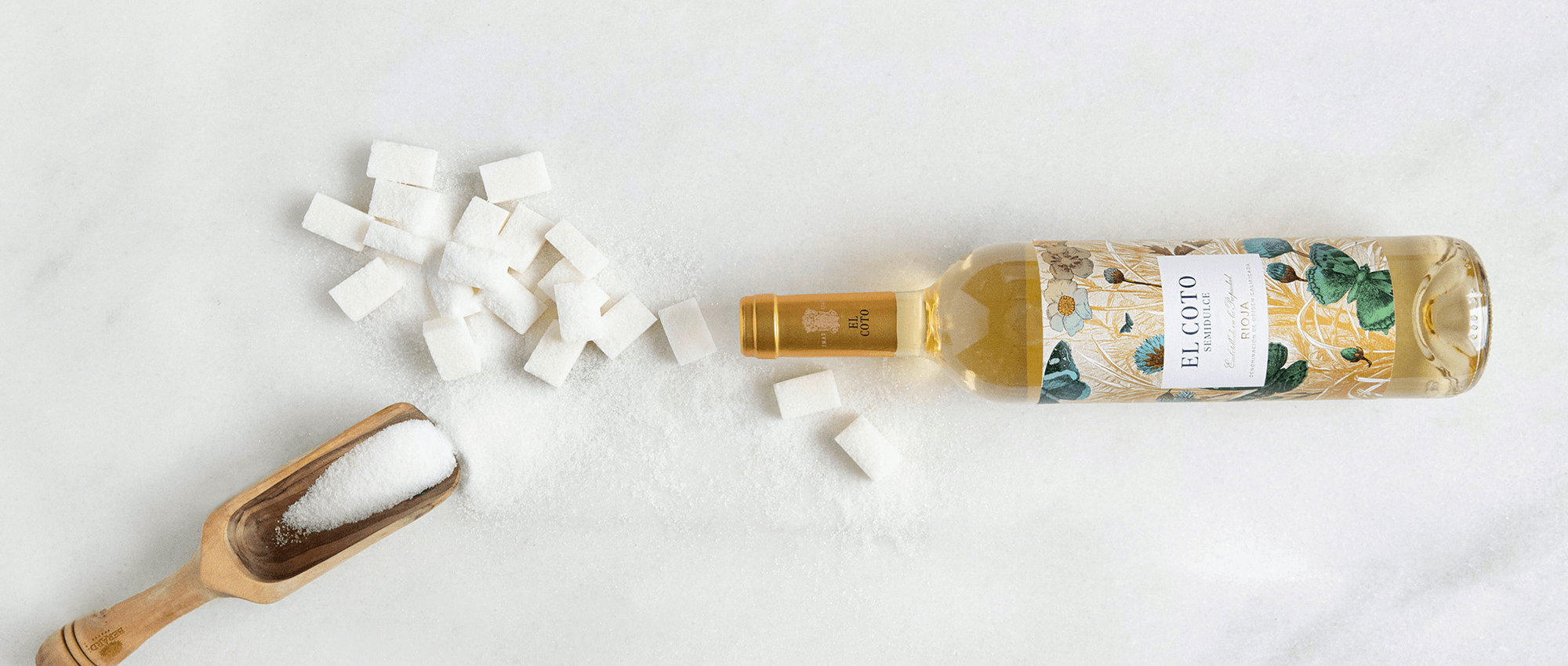
How to detect sweetness in wine
Sweetness in wine is, of course, one of the easiest flavours to detect on the palate. Do you want to learn how to do it? Don’t forget to take a look at the latest WineClass and keep a note of these simple tips for finding the sweet taste in wine. Learn all the in-and-outs of your favourite drink.
Here we go!
Here at El Coto de Rioja we want to make sure that “knowing your wines” isn’t an impossible task. That’s why we create WineClass, fun mini-classes so that you can use your five senses, learn about and find all the different nuances in wine and enjoy it to the full.
It’s really quite simple! What’s more, you can follow all of our classes from the comfort of your own home with a glass of wine in your hand. Could there be anything better?
We’re now on episode seven and, this time, we’re going through the first of the five flavours in wine. Don’t miss this chance to learn how to find it in your favourite wines. Hit Play!

Why are some wines sweet?
At least to some extent, all wines have a sweet twist that we can easily taste. In fact, it is one of the easiest flavours in wine to detect in the mouth. But do you know where this taste comes from?
There are three factors that cause the sweet flavour in wine, and each of them come from a completely different place. Let’s take a look at them:
1. Sugar
Regardless of whether it’s a semi-sweet or a dry wine, all wines have a certain amount of sugar that comes from the grape itself. The level of sweetness that we taste in a wine depends on the amount of sugar it contains.
The fermentation controls the sugar levels when it turns grape juice into wine. But that’s not the end of the story! Not all sugars get fermented. The sugar that remains is known as “residual sugar”, which is the concentrated amount that ends up in any wine.
The quantity of sugar will vary from wine to wine. For example, in sweet wines, we stop the fermentation process earlier to keep more sugar in them. With most dry wines, the opposite happens, and the fermentation goes on for longer.
To give you a better idea, the quantities in non-sparkling wines are as follows:
- Dry: less than 4 g/l
- Off-dry: 12 – 18 g/l
- Semi-sweet:18 – 45 g/l
- Sweet: over 45 g/l
2. Alcohol
Yes, you read that right. The sweet sensation in wine also comes from the alcohol in it.
It’s quite simple. During fermentation, alcoholic substances are formed, apart from the sugar in the wine, which give it a sweet flavour. Some of the most important alcohols from fermentation are ethanol or ethyl alcohol (which makes up for about 10-14% of a wine) and glycerol.
Alcohol gives a wine its silky or smooth feeling, as well as its sweetness.
3. Temperature
This is probably the most surprising fact. How can temperature affect the sweetness of a wine? We’ll tell you what happens.
This curious occurrence is known as “thermal sweetness” and happens when we drink a warm wine (or one that’s hotter than the temperature it should be served at), and our taste buds are stimulated in the same place that they detect sweetness.
This sensation confuses our brains and, as such, they make us think that we’re picking up on a sweet flavour when we’re really feeling the temperature of the wine.
Although this can happen with any kind of wine, this illusion normally happens with red wines. So, now you know, when you’re tasting a wine, make sure it’s at the right temperature!


Tricks for recognising the sweet taste in wine
As you already know, we detect each different flavour on a different part of our tongues. We already told you that sweetness is detected in the same area as temperature. But which one is it? It’s the very tip of the tongue.
Sweetness is one of the easiest flavours to recognise, but you need to train your palate and know which sensation you need to perceive, you just need to try this trick.
Put the tip of your tongue on a simple sugar cube and concentrate on that area. The sweeter the wine you're tasting, the more intense the sensation you’ll feel on your tongue.
Now you’ve got that, compare the flavour with a something like semi-sweet wine (such as El Coto Semidulce) and a dry wine (such as El Coto Blanco). Can you taste it?
And that’s it! Now you know everything about detecting sweetness in wine. Try our tips and enjoy your wine like never before.
You can find all of the WineClass episodes on the official El Coto de Rioja YouTube channel. If you don’t want to miss any of our new videos, click on the bell icon to be the first to know when we bring out a new class. In the next episode, we’ll be talking about the second flavour to be recognised: saltiness. Don’t miss it!
Meanwhile, take a look at the content on our El Coto de Rioja. They’re full of tips and useful information about the world of wine:
















